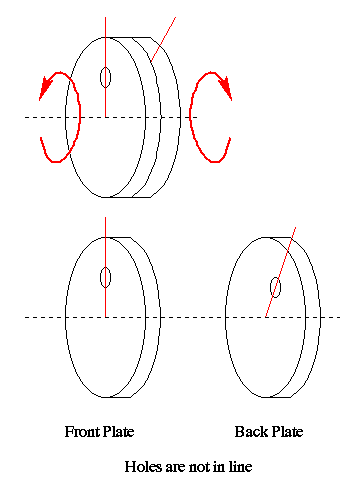
Power = d/dt (Work)
If torque is not a function of time, then the equation for power simply becomes:
It is important that we use consistent units for P, T, and w. Power is commonly specified in horsepower, HP. In that case we can convert HP to ft-lb/sec by multiplying it by 550, and to in-lb/sec by multiplying it by 6600. Angular velocity is usually given in revolutions per minute or RPM. It should then be converted to rad/sec. To do this multiply the value in RPM by 2 pi and divide by 60. Therefore, to get the units of in-lb for torque, the conversion factor becomes:
Mechanical coupling is commonly used to extend the length of a shaft or to connect the shaft to another component. An example of this can be found in flap mechanism as well as in the propeller shaft. The figure below shows that with two disks in contact, the applied torque will tend to rotate one relative to the other. This relative displacement, if prevented, will lead to the creation of shear stress and strain at the surface of contact. These types of disks are typically bolted together. In that case, the torque will put the bolts in the state of plane shear.

In problems of mechanical coupling, it is commonly assumed that the surface of contact is frictionless and that the entire torque is transmitted through the bolts which are distributed in a circular pattern at a particular distance from the center.
As in the case of a circular shaft, the shear strain varies linearly from the center of the cross section. Since the diameters of bolts are usually much smaller than that of the coupling plate, it is commonly assumed that the shear strain is constant along the bolt's cross-sectional area. Starting from the original equation for torque we can drive the special form for the mechanical coupling problems as follows:
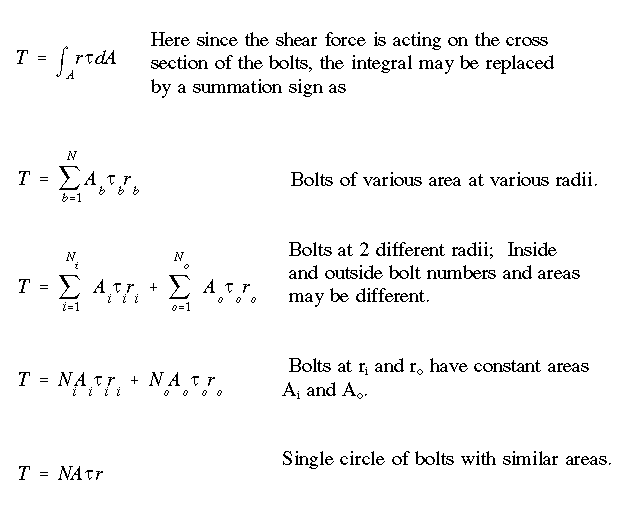


We need to balance the number and size of bolts being used. Is it better to use a large quantity of small bolts or few large bolts. We also need to keep in mind the damage tolerance issue. If we use too few bolts, then what would happen in the case one gets sheared off. Will the remaining bolts carry the desired load? Questions like this would have to be answered by the designer before the design can be accepted for production.
Below we see the equations used for the coupling analysis.
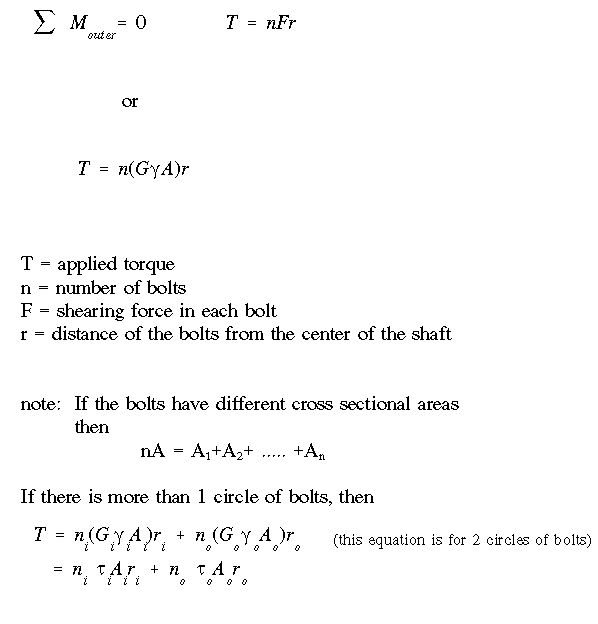
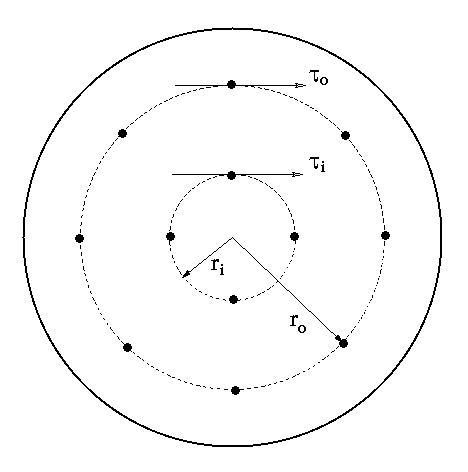
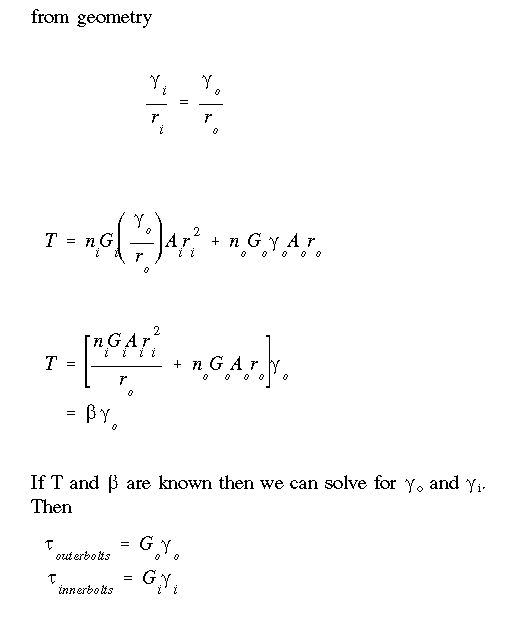
 To Index Page of Pure
Torsion
To Index Page of Pure
Torsion
 To Section I.1
To Section I.1
 To Section I.2
To Section I.2